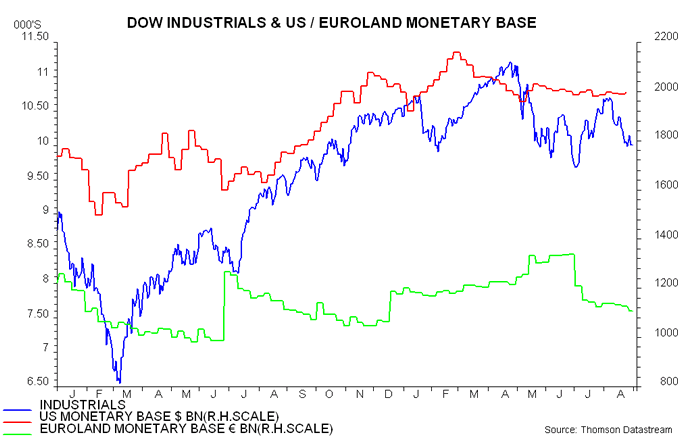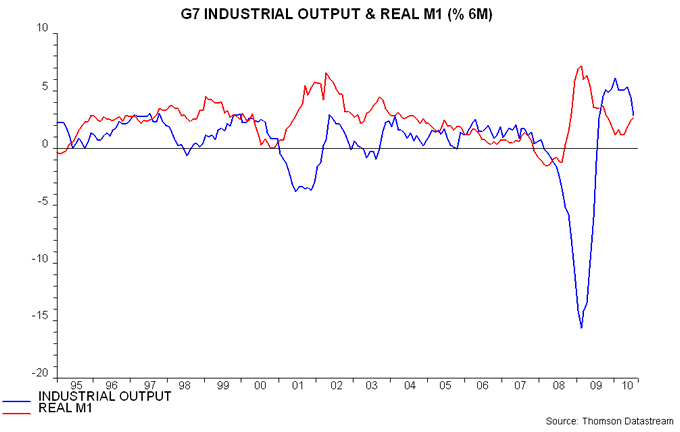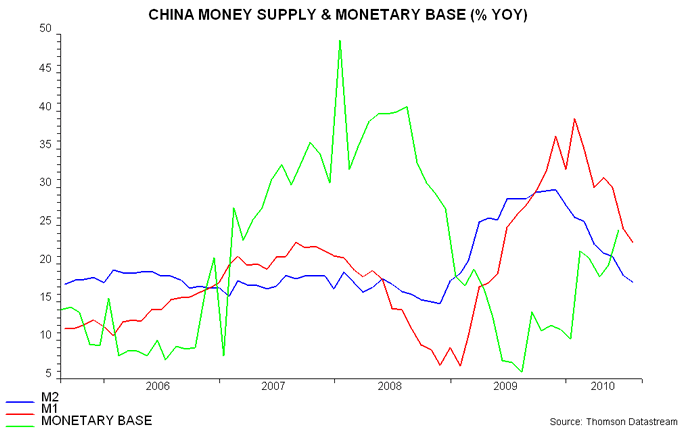Is global liquidity starting to improve?
Posts since the spring have suggested a defensive investment stance on equities and other "risk" assets, for two reasons. First, the annual growth rate of G7 real narrow money, M1, fell beneath that of industrial output in February (firm data available in early April). Historically, equities have underperformed cash on average under this condition, while outperforming significantly when real M1 has outpaced output.
Secondly, the US monetary base started to contract in early 2010 – markets have exhibited a lagged correlation with base fluctuations since the Federal Reserve embarked on "QE1" in late 2008. The fall in equities from April followed a decline in the US monetary base from late February while the slide in markets during August may have been a lagged response to Eurozone base weakness from early July – see first chart.
Both factors, however, may now be improving at the margin.
The six-month increase in G7 real M1 has recovered recently, with a move above slowing industrial output expansion possible in August – second chart. A convergence of annual growth rates, however, is unlikely before late 2010 – a "safety-first" strategy would be to wait for this signal before turning more bullish.
The US and Eurozone monetary bases, meanwhile, appear to be stabilising after their declines. Central banks are likely to maintain an ample liquidity supply in the near term given jittery markets and "double-dip" worries, with a rise in the US base possible if the Fed moves to "QE2" or asks the Treasury to suspend the supplementary financing programme (which has effectively sterilised the reserves impact of $200 billion of Fed securities purchases). Again, however, it may be advisable to await such steps before abandoning caution.
Chinese monetary base developments may also be relevant: annual growth has been strengthening, in contrast to a slowdown in the M2 and M1 money supply measures – third chart. Interestingly, the Chinese domestic "A" share market has outperformed global equities recently: the FTSE / Xinhau China "A" all-share index rose by 4.1% during August versus a 4.7% decline in the S&P 500.



Reader Comments